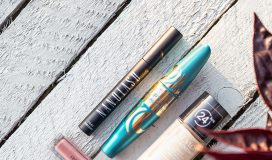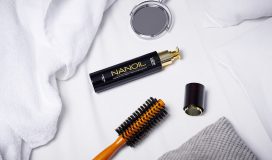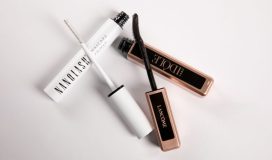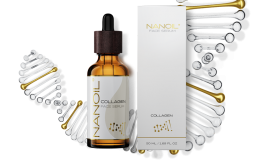Red spots, burning, itching, small pimples – sensitive skin reacts to a new cosmetic and products with strong action, chlorinated water as well as rapid temperature changes. How to identify sensitive skin and how to distinguish it from allergy-prone and couperose skin types? What should the care of sensitive skin look like? Here are my ways to moisturize and cleanse sensitive skin.
How to identify sensitive skin?
Sensitive skin overreacts to external factors – itching, burning, and tension. This is because its defense mechanisms have been disturbed. This is usually the cause of inadequate hydration of the epidermis and damage to the protective hydro-lipid layer by cosmetics that change its acidic pH to alkaline. The reaction of sensitive skin is rapid and is revealed by irritation.
It was thought for a long time that only dry skin can react in such a way, and oily and combination skin types are more resistant. Meanwhile, hypersensitivity and susceptibility to irritation do not depend on the type of skin:
- dry skin due to irritating substances dries out even more, a burning sensation appears as well as small, red spots;
- combination and oily skin also reacts with burning sensation, and additionally with flakiness and large red patches.
As a rule, sensitive skin affects people with fair complexion including red hair.
How to distinguish sensitive skin from allergic skin?
Sensitive skin reacts instantly and allergic skin – with delay. That it is easiest way to distinguish them from each other. Changes on the allergic skin occur 12-72 hours after contact with an irritant. Allergy appears due to the lack of immunity not only of the skin but also of the whole organism. The sensitized person reacts with erythema, rash and severe exfoliation to any organic or inorganic substance. It can be a cosmetic ingredient, a nutrient, plant pollen, mite droppings, animal dander, and chemicals. Allergic skin does not tolerate natural ingredients cosmetics with plant extracts and animal origin well.
The delayed reaction of the allergic skin makes it difficult to establish an allergen, therefore the treatment is long-lasting and requires not only changes in cosmetics but also specialist pharmacological therapy.
How to distinguish sensitive skin from couperose skin?
The couperose skin is sensitive yet redness appears on both types. Nevertheless, these two manes do not mean the same. Couperose skin reddens under the influence of external factors such as frost, wind, temperature fluctuations or air conditioning. Telangiectasia, i.e. broken capillaries, is one of its main characteristics.
Damage of the defensive mechanisms of the skin can have many causes; some of them do not depend on us, while we have an influence on others. The following are considered the most important:
- environment pollution,
- heating and air conditioning,
- stress,
- sunbathing,
- smoking (active and passive),
- improper care,
- rapid temperature changes,
- wind,
- chlorinated water,
- detergents in powders and lotions.
Sensitive skin care – my methods
Nourishing sensitive skin
Sensitive skin should be moisturized from inside and outside. For this purpose, drink two liters of water, including a glass of non-carbonated mineral water on an empty stomach, immediately after waking up. In winter, use oil-based creams that will create a protective film on the skin surface, and in the summer, apply sunblock creams on a daily basis. Before you buy a new cosmetic, ask for a tester and run an allergy test. Apply it behind your ear or on the forearm. If the rash or redness does not occur, you can apply the cosmetic even to a more delicate face. With sensitive skin, do not experiment with cosmetics, even though new products can be tempting.
Cleansing sensitive skin
For your morning face cleansing, use water in-spray, mineral water or a chamomile infusion. You can give up water and use a cosmetic milk instead.
When shopping for a face cream, look for a cosmetic that contains fewer active ingredients, preservatives, coloring, and fragrancing substances. The cream for sensitive skin should consist of fatty acids, ceramides, vitamin E, panthenol, thermal water, hyaluronic acid and extracts from chamomile, lemon balm and borage. All these substances strengthen the epidermis and hydrolipid layer and soothe irritations. Apply the cream gently so as not to stretch the skin. During the day, moisturize your face with spray water.
Usually, sensitive skin cannot tolerate colored cosmetics because they contain chemicals that can irritate it, including chromium and nickel. To avoid this, you should choose foundations, mascaras, eyeshadows and lipsticks dedicated to sensitive skin.
To remove the makeup and cleanse your face from dust and sebum, apply soothing lotions. Apply a thick layer and gently wipe it with a cotton pad. Then wipe the face with an alcohol-free toner. For eye makeup removal, choose preparations that are free of preservatives, with neutral pH and slightly oily consistency.
Washing sensitive skin is not easy, because it is difficult to use mineral or boiled water to cleanse the whole body. For this reason, the cleansing preparations that you use should moisturize, soothe irritations, prevent damage to the hydro-lipid layer of the epidermis and maintain the acidity of the skin. If you like bubble baths, avoid lathering and fragrant liquids. Replace them with oils designed for the care of dry and sensitive skin.
How do you take care of your sensitive skin? What cosmetics do you reach for and which ingredients you absolutely avoid? I am waiting for your comments!













Leave a Reply